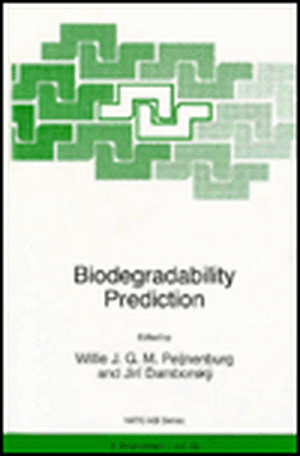Biodegradability Prediction: NATO Science Partnership Sub-Series: 2:, cartea 23
Editat de Willie J. Peijnenburg, Jiri Damborsky, W. J. Peijnenburgen Limba Engleză Hardback – 31 oct 1996
Preț: 577.69 lei
Preț vechi: 679.63 lei
-15% Nou
Puncte Express: 867
Preț estimativ în valută:
110.55€ • 120.05$ • 92.87£
110.55€ • 120.05$ • 92.87£
Carte tipărită la comandă
Livrare economică 22 aprilie-06 mai
Preluare comenzi: 021 569.72.76
Specificații
ISBN-13: 9780792343417
ISBN-10: 0792343417
Pagini: 160
Dimensiuni: 160 x 240 mm
Greutate: 0.4 kg
Editura: Kluwer Academic Publishers
Seria NATO Science Partnership Sub-Series: 2:
Locul publicării:Dordrecht, Netherlands
ISBN-10: 0792343417
Pagini: 160
Dimensiuni: 160 x 240 mm
Greutate: 0.4 kg
Editura: Kluwer Academic Publishers
Seria NATO Science Partnership Sub-Series: 2:
Locul publicării:Dordrecht, Netherlands
Public țintă
ResearchCuprins
Introduction, Main Conclusions and Recommendations of the Workshop `QSAR Biodegradation II'; W. Peijnenburg, J. Damborský. Part I: Biodegradability (foundations, testing). Biodegradability of Xenobiotic Organic Compounds Depends on their Chemical Structure and Efficiently Controlled, and Productive Biochemical Reaction Mechanisms; R.-M. Wittich. Biodegradability Testing of Xenobiotics; P. Pitter, V. Sýkora. Part II: Biodegradability Modelling (trends, methods). The META-CASETOX System for the Prediction of the Toxic Hazard of Chemicals Deposited in the Environment; G. Klopman. Application of Artificial Intelligence in Biodegradation Modelling; D. Gamberger, et al. Polychlorinated Dibenzo-p-Dioxins in Anaerobic Soils and Sediments. A Quest for Dechlorination Pattern-Microbial Community Relationships; P. Adriaens, et al. A Biodegradability Evaluation and Simulation System (BESS) Based on Knowledge of Biodegradation Pathways; B. Punch, et al. A Mechanistic Approach to Deriving Quantitative Structure Biodegradability Relationships. A Case Study: Dehalogenation of Haloaliphatic Compounds; J. Damborský, et al. Part III: Biodegradability Prediction (Applications). Quantitative Structure-Biodegradability Studies: An Investigation of the MITI Aromatic Compound Data-Base; J. Dearden, M. Cronin. Prediction of Biodegradability from Chemical Structure: Use of MITI Data, Structural Fragments and Multivariate Analysis for the Estimation of Ready and Not Ready Biodegradability; H. Loonen, et al. Development of Structure-Biodegradability Relationships (SBRs) for Estimating Half-Lifes of Organic Contaminants in Soil Systems; R. Govind, et al. Index.
